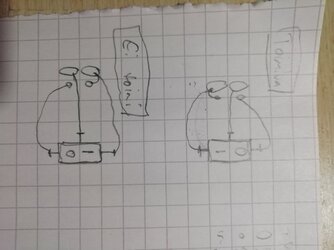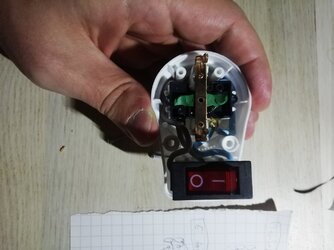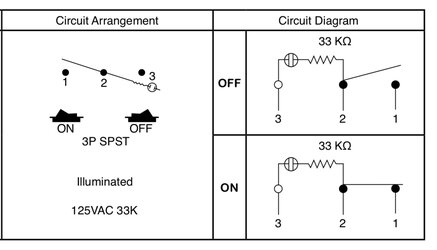L
LauHir
Hey!
I bought a few simple on/off switches that you plug into a socket, and they have a single output which is either on or off depending on a toggle on the switch. It's AC current.
However, as I put a LED onto one of them, I noticed it was dimly lit even after the switch was set to off. Also, an adapter with a LED on it would blink every 20 seconds. This LED is supposed to be either on or off. Something was filling it's capacitors. I used a multimeter and it showed a bouncy supply of 0V to 2.5V being pushed out of the switch when it was off.
I tested another switch I bought, and it worked as intended. No dim light, no flashing LED.
I had bought about 5 switches, from two different places. I tested all of my switches, and 3/5 of them would leak, and two would not.
I opened up the actual toggle switch on one of the leaking ones, and I saw nothing wrong. I removed the whole switch mechanism, but left it soldered as is and plugged it in. Even without a functioning switch, it was still leaking. No wires are connected directly to each other to create a circuit.
However, I noticed how the toggle switch was O on top and I on bottom on the switches that worked, and it was reverse in the ones that leaked.
As I looked at the wiring, it was also reversed, which to me would mean that it should be correct.
I will attach two pictures. One is of the switch that leaks, and one is of a drawing I made for myself to show the connections.
The top drawing is of a switch that works. The bottom drawing is of a switch that does not work. The small circles are connections to and from the wall socket. The large circles are the connections that go to any given device I plug into the switch.
In text form, a switch that does lot work has a connection come from the wall into the connector, then into the I pin of the switch. A connection comes out of the center and goes into the other connector. Then a connection comes out of the O pin, and into the wall. The drawing will make more sense. The switch that works is reversed this, but the connections are all the same.
So what gives? I don't see how this system can leak current even without a working toggle switch. The pins remained on the switch, and so did all the connections. The only thing that was missing was the insides of the actual toggle switch.
I bought a few simple on/off switches that you plug into a socket, and they have a single output which is either on or off depending on a toggle on the switch. It's AC current.
However, as I put a LED onto one of them, I noticed it was dimly lit even after the switch was set to off. Also, an adapter with a LED on it would blink every 20 seconds. This LED is supposed to be either on or off. Something was filling it's capacitors. I used a multimeter and it showed a bouncy supply of 0V to 2.5V being pushed out of the switch when it was off.
I tested another switch I bought, and it worked as intended. No dim light, no flashing LED.
I had bought about 5 switches, from two different places. I tested all of my switches, and 3/5 of them would leak, and two would not.
I opened up the actual toggle switch on one of the leaking ones, and I saw nothing wrong. I removed the whole switch mechanism, but left it soldered as is and plugged it in. Even without a functioning switch, it was still leaking. No wires are connected directly to each other to create a circuit.
However, I noticed how the toggle switch was O on top and I on bottom on the switches that worked, and it was reverse in the ones that leaked.
As I looked at the wiring, it was also reversed, which to me would mean that it should be correct.
I will attach two pictures. One is of the switch that leaks, and one is of a drawing I made for myself to show the connections.
The top drawing is of a switch that works. The bottom drawing is of a switch that does not work. The small circles are connections to and from the wall socket. The large circles are the connections that go to any given device I plug into the switch.
In text form, a switch that does lot work has a connection come from the wall into the connector, then into the I pin of the switch. A connection comes out of the center and goes into the other connector. Then a connection comes out of the O pin, and into the wall. The drawing will make more sense. The switch that works is reversed this, but the connections are all the same.
So what gives? I don't see how this system can leak current even without a working toggle switch. The pins remained on the switch, and so did all the connections. The only thing that was missing was the insides of the actual toggle switch.
- TL;DR
- Some on off switches work, others leak a small amount of current in off position. Only difference seems to be which way the toggle switch is.











